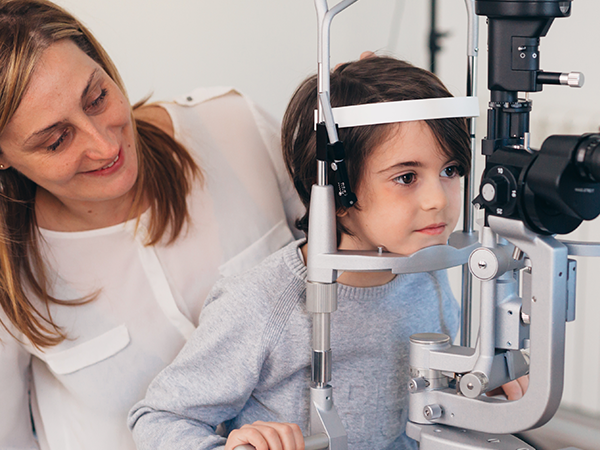
Glaucoma is a serious eye condition that can lead to vision loss if left untreated. Often referred to as the "silent thief of sight," glaucoma develops gradually and may not present noticeable symptoms in its early stages. Early detection through routine eye exams is crucial in preventing permanent vision damage. At GrandView Eyecare, we prioritize comprehensive glaucoma screenings to ensure our patients receive timely diagnosis and treatment. Here’s a step-by-step guide to the most common tests used to diagnose glaucoma.
Tonometry
One of the primary risk factors for glaucoma is increased intraocular pressure (IOP). Tonometry is a test that measures this pressure. There are several types of tonometry tests:
Applanation Tonometry: This method involves numbing the eye and using a small probe to gently touch the cornea, measuring the resistance to pressure.
Non-Contact Tonometry (NCT): Often called the "air puff" test, this method uses a burst of air to flatten the cornea momentarily and calculate eye pressure.
Although high eye pressure is a common indicator of glaucoma, it is not the only factor considered during diagnosis.
Ophthalmoscopy
The optic nerve connects the eye to the brain and plays a critical role in vision. During an ophthalmoscopy exam, your eye doctor will:
Dilate the pupils with special drops.
Use a bright light and a magnifying lens to examine the optic nerve for signs of damage, such as cupping (a depression in the center of the optic nerve).
Changes in the optic nerve’s appearance may indicate glaucoma, prompting further testing.
Perimetry
Glaucoma often affects peripheral (side) vision first, making visual field testing essential. Perimetry maps the full range of vision by:
Having the patient focus on a central point.
Requiring them to press a button whenever they see flashes of light appear in different areas of their vision.
A pattern of vision loss may indicate glaucoma, helping doctors assess the extent of damage.
Gonioscopy
The eye has a drainage system that regulates intraocular pressure. Gonioscopy examines this drainage angle using a special mirrored lens to determine:
If the angle is open (normal) or closed (which may indicate angle-closure glaucoma).
Whether there are blockages or abnormalities affecting fluid drainage.
Understanding the angle structure helps in diagnosing the type of glaucoma a patient may have.
Optical Coherence Tomography (OCT)
OCT is an advanced imaging test that provides detailed cross-sectional images of the retina and optic nerve. It helps:
Measure the thickness of the retinal nerve fiber layer.
Detect early changes before vision loss occurs.
This test is especially useful for monitoring glaucoma progression over time.
Pachymetry
Corneal thickness can influence intraocular pressure readings. Pachymetry uses ultrasound waves to measure corneal thickness, providing:
A more accurate assessment of IOP.
Additional insights into glaucoma risk factors.
Thin corneas can lead to underestimation of eye pressure, while thick corneas may result in overestimation.
Schedule Your Glaucoma Screening Today
Glaucoma diagnosis involves a combination of tests to assess eye pressure, optic nerve health, visual field loss, and other critical factors. Because glaucoma often develops without noticeable symptoms, regular eye exams are essential for early detection and treatment. We use state-of-the-art diagnostic tools to provide comprehensive glaucoma screenings and personalized care.
If you’re due for an eye exam or have concerns about glaucoma, schedule an appointment with GrandView Eyecare for a thorough evaluation and personalized care. Visit our office in Fairbury or Hebron, Nebraska. Call (402) 729-6162 or (402) 768-6651 today.







